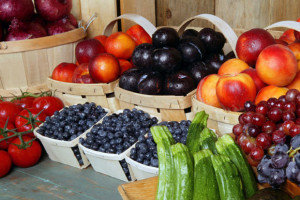Hypertension is a major risk factor for heart attack and stroke which can be fatal if proper care is not taken. Besides prescription medication, there are other ways to help reduce high blood pressure, one of them being keeping track of what you eat. As the saying goes, You Are What You Eat.
Foods rich in potassium, magnesium, calcium, fiber and vitamin C should be included in your daily diet to help maintain blood pressure levels and for overall well being. Omega 3 fatty acids also play an important role in lowering blood pressure levels. Below is a list with some of these super foods.
Celery
Celery contains phthalides, which relax the muscle tissue in the artery walls, enabling increased blood flow and, in turn, lowering blood pressure.
Fish (Salmon, Mackerel, Sardines and Tuna)
Omega-3 fatty acids are essential fatty acids: The human body can’t make them, so we need to get them from the food we eat. Omega-3s act as a natural blood thinner, making it easier for your heart to pump blood around your body.
Broccoli
Broccoli is packed fiber, potassium, calcium, magnesium, and vitamin C, all nutrients that help lower blood pressure. One cup of steamed broccoli provides more than 200 percent of the vitamin C you need each day. Researchers aren’t sure how, exactly, vitamin C helps. Theories range from the vitamin promoting the excretion of lead to calming the sympathetic nervous system to protecting nitric oxide, a molecule that relaxes blood vessels, thereby increasing blood flow. But the results are the same: Antioxidant vitamin C helps normalize blood pressure.
Whole Grain Oats
The fiber and magnesium found in oats both have beneficial effects on blood pressure. In addition, oats slow atherosclerosis, the plaque build up that occurs in blood vessels.
Beans
Beans are a nutrient-dense source of fiber and magnesium, which are essential for healthy blood pressure levels. What puts them at a distinct advantage over other foods, though, is the folate you’ll find in these legumes. Folate, also known as folic acid in its synthetic form, is a B-complex vitamin that appears to lower blood pressure (especially systolic blood pressure) by relaxing blood vessels and improving blood flow.
Low Fat Dairy Products (Milk, Yogurt, Cheese)
The modest amount of fat in low-fat dairy is important because it increases the bioavailability of calcium, making it easier for the body to absorb. In addition, milk and dairy products offer blood-pressure-lowering magnesium and potassium.
Bananas
Bananas are rich in potassium. Potassium is a valuable mineral supplement that helps to regulate blood pressure by encouraging your body to flush out excess sodium. As your potassium levels increase, you body gets rid of sodium. When you lack potassium, your body retains sodium. If you enjoy bananas, eat as many as five daily. I heard of a study which showed that eating five bananas daily reduced high blood pressure as efficiently as prescription medicine.
Garlic (Raw, Slightly Cooked or in Capsule form)
Garlic dilates the muscles of blood vessels, which helps in lowering blood pressure. It consists of a compound called adenosine which helps in vaso dilation and is also a muscle relaxant.
Spinach and other Green Leafy Vegetables
These leafy vegetables are loaded with potassium and magnesium which dissolves blood clots and stimulates the production of nitric oxide, helping to relax and dilate blood vessels for better blood flow.
Potatoes
Potatoes are a great source of fiber and potassium, which is used to regulate the water your body retains from foods and beverages. If the body holds too much water, it causes the blood pressure to rise. Eating too much sodium can cause this but potassium acts as a diuretic and rids the body of the sodium.
